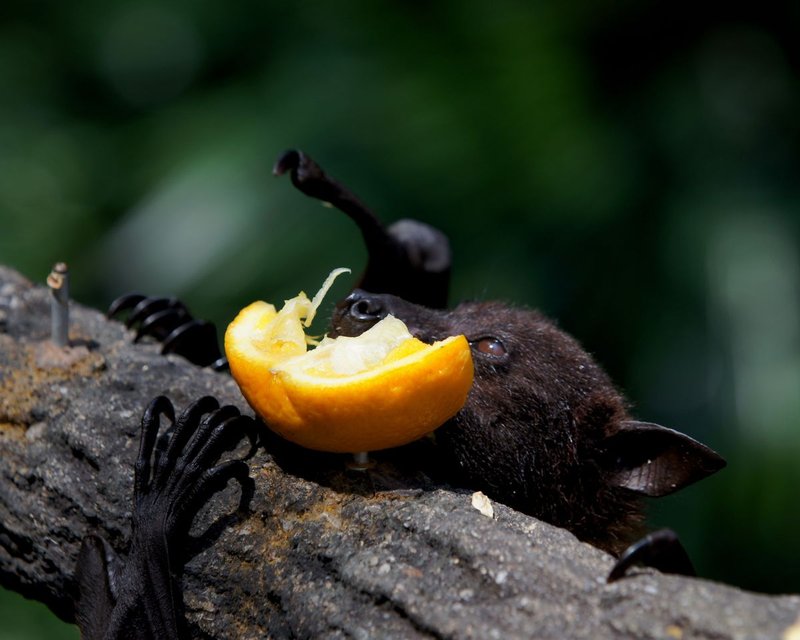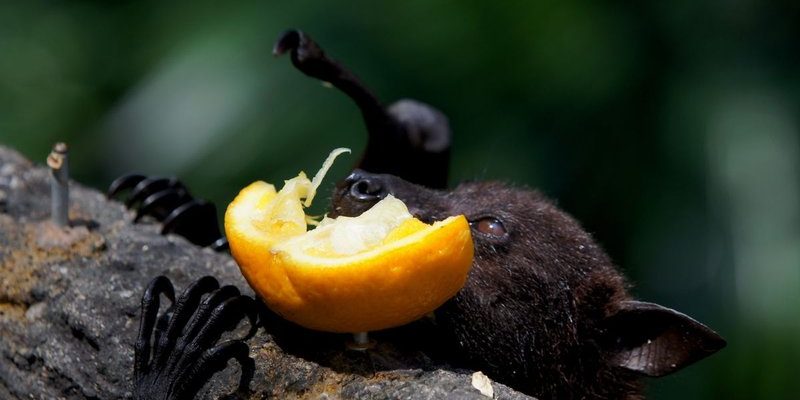
So, how do these nocturnal mammals find food in the dark? Let’s dive into the world of bats, exploring their diet, the varied hunting strategies they employ, and why they are crucial for our environment. Grab your coffee, and let’s get into it!
Understanding Bat Diets
Bats are *not* all about sucking blood—thankfully! In fact, they have an incredibly diverse diet that can range from insects to fruits, nectar, and small animals. Depending on the species, a bat’s diet can vary widely, which is one of the reasons they thrive in so many different environments.
- Insectivorous bats feed on insects like moths, beetles, and mosquitoes. They help control pest populations, which is a huge boon for farmers and gardeners.
- Fruit bats, or flying foxes, have a diet primarily composed of fruits. They play a vital role in seed dispersal, helping to propagate various plant species.
- Vampire bats—the notorious ones—do exist, but they make up a tiny fraction of bat species. They primarily consume the blood of other animals.
You might be wondering how they find their food at night. Here’s the thing: bats have evolved amazing adaptations that allow them to locate their meals with incredible precision, even in complete darkness.
High-Flying Insect Hunters
Many bats are insectivorous, which means they mainly eat insects. These bats are like the ultimate night-time predators. They use echolocation, a fascinating skill that allows them to emit high-frequency sounds and listen for the echoes. By doing this, they can detect the location, distance, and even the size of their prey.
When a bat is hunting, it will typically fly at speeds of 10 to 20 miles per hour, darting through the air as it catches insects mid-flight. Imagine trying to catch fireflies on a summer night—that’s what these bats do, but with a lot more skill!
Their echolocation abilities are so advanced, they can distinguish between different types of insects and even avoid obstacles. This means that while we might be swinging a flashlight around, these bats are expertly zipping around, having a full meal with hardly any effort.
Nectar and Fruit Lovers
Not all bats are out hunting insects. Fruit bats, or *megabats*, have their own unique hunting strategies. These bats feed primarily on fruits and nectar, making them important pollinators in many ecosystems. In a way, they are the “gardeners” of the night!
When fruit bats visit flowers, they help transfer pollen from one bloom to another, assisting in plant reproduction. They also feast on delicious fruits, like mangoes, bananas, and figs, which can be a pretty sweet deal for them.
Their tongues are specially adapted for this purpose, often long and narrow, allowing them to reach deep into flowers and drink nectar. It’s a win-win situation—while they get their fill, they’re also providing a crucial service to the plants.
Advanced Hunting Techniques
Bats exhibit some of the most advanced hunting techniques in the animal kingdom. For example, some species can adjust the frequency of their echolocation calls based on the environment they’re in. This means they can use different frequencies for hunting in open spaces versus dense forests.
Another interesting technique some bats use is the “*wing mimicry*” method. This means they can change their wing beats to imitate the sound of insects. As a result, they can lure in unsuspecting prey, much like a fisherman using bait. It’s a clever tactic that shows just how smart these little creatures are!
You might find it surprising that some bats can even form hunting groups. They coordinate attacks to catch larger swarms of insects, much like a team of soccer players moving in tandem to score a goal. Such cooperation enhances their hunting success, allowing them to take advantage of an abundant food source.
Environmental Impact of Bats
Bats play a significant role in maintaining healthy ecosystems. Their diets and hunting strategies not only help control insect populations but also aid in seed dispersal and pollination. When fruit bats eat fruit and excrete the seeds far from their original location, they help new plants grow in different areas, which fosters biodiversity.
Additionally, insectivorous bats can consume thousands of insects in a single night. That’s like having a natural pest control service! This is especially important for farmers, as bats help reduce the need for chemical pesticides. Imagine your garden blooming without the worry of pesky bugs—that’s a benefit bats provide!
Sadly, many bat populations are declining due to habitat loss, climate change, and diseases like White-nose Syndrome. This decline could significantly impact our ecosystems, so it’s essential to protect these remarkable creatures.
Challenges in Bat Hunting
Despite their impressive adaptations, bats face several challenges when it comes to hunting. Environmental factors like urbanization and light pollution can disrupt their echolocation. Bright lights can confuse them, making it harder to locate food and navigate effectively.
Additionally, the use of pesticides can reduce their food supply. When insects are eliminated, bats have fewer resources to rely on, which can negatively affect their populations. Imagine living in a world where your favorite food was suddenly gone—that’s what bats are experiencing.
Furthermore, climate change is altering their habitats and food supplies. As seasons shift, the timing of insect populations and flowering plants can be affected, disrupting the delicate balance that bats rely on for survival.
Why Bats Matter
In summary, bats are much more than just creatures of the night. Their diverse diets and advanced hunting strategies make them crucial players in our ecosystems. Whether they’re pollinating flowers, dispersing seeds, or controlling insect populations, bats contribute significantly to a healthy environment.
So, the next time you hear flapping wings overhead or see bats swooping through the air at dusk, remember how vital these little mammals are. They’re not just interesting to watch; they’re essential to life as we know it. Protecting bats means preserving our ecosystems, ensuring that these winged wonders can continue their important work.
Bats truly deserve our respect and admiration for their unique roles in nature. By learning more about them and advocating for their protection, we can help ensure their survival for generations to come. Let’s celebrate the bat and its incredible contributions to our world!

